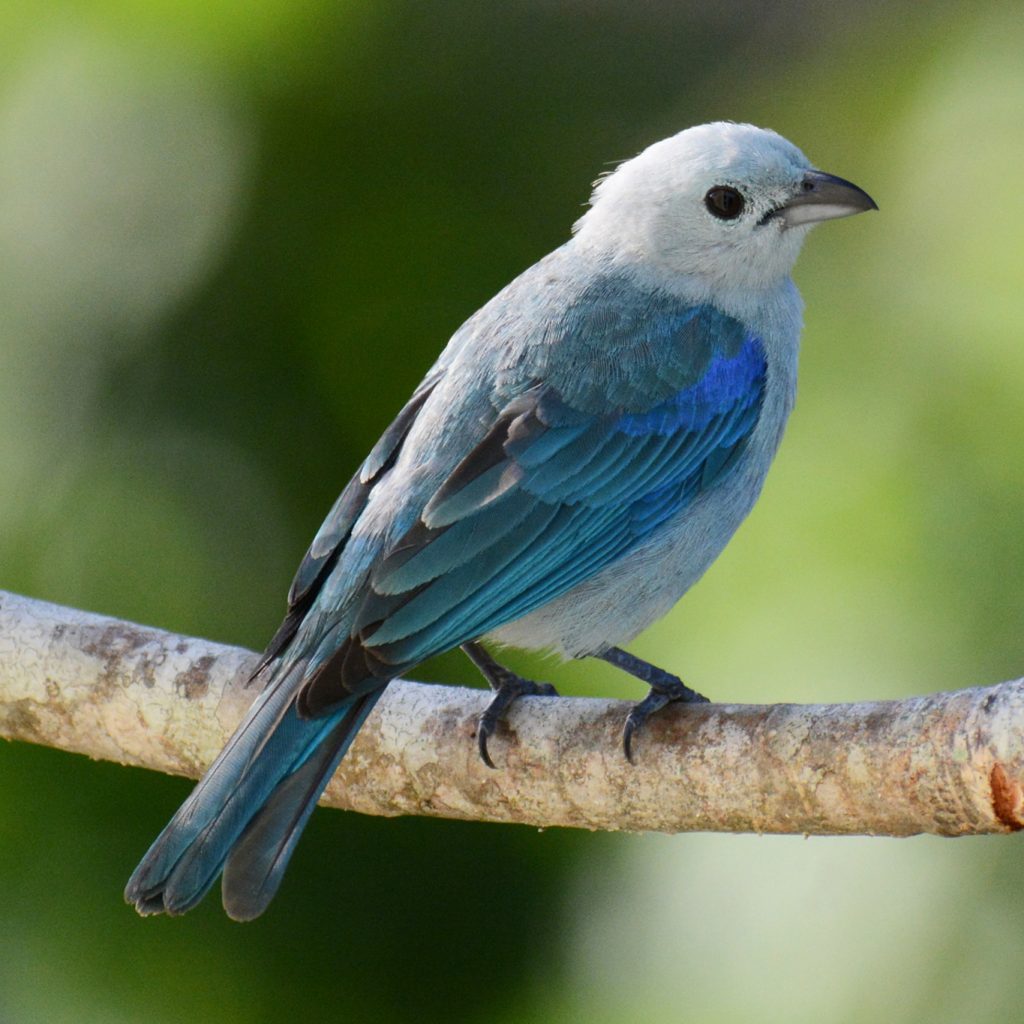 Photo ©
MarieO'Neill
Photo ©
MarieO'Neill
Blue-gray Tanager
Regional Species
The Blue-gray Tanager is a common bird in the tropical and sub-tropical regions of the continent. it prefers semi-open areas such as forest edges, along roads and rivers, agricultural and urban areas. The Blue-gray Tanager is not found in the interior of closed canopy forest. It eats a wide variety of fruits, insects and other invertebrates. Blue-gray Tanagers typically travel in pairs or small flocks.
Range

Habitat
![]() The Blue-gray Tanager is one of the most notorious and widely distributed birds in the tropical and sub-tropical regions of the continent. It prefers semi-open areas such as forest edges, along roads and rivers, agricultural areas and urban parks and gardens. It is not found inside dense forests, but can be observed in recent forest clearings. It prefers to eat fruits on top or middle of trees. The Blue-gray Tanager is common in cities and towns.
The Blue-gray Tanager is one of the most notorious and widely distributed birds in the tropical and sub-tropical regions of the continent. It prefers semi-open areas such as forest edges, along roads and rivers, agricultural areas and urban parks and gardens. It is not found inside dense forests, but can be observed in recent forest clearings. It prefers to eat fruits on top or middle of trees. The Blue-gray Tanager is common in cities and towns.
Food
![]() he Blue-gray Tanager feeds on a diversity of fruits, insects and other invertebrates.
he Blue-gray Tanager feeds on a diversity of fruits, insects and other invertebrates.
Behavior
![]() The Blue-gray Tanager travel in pairs or in small flocks of a single species. Sometimes it briefly joins flocks of mixed species for food, but it does not travel with these flocks.
The Blue-gray Tanager travel in pairs or in small flocks of a single species. Sometimes it briefly joins flocks of mixed species for food, but it does not travel with these flocks.
Nesting
![]() The Blue-gray Tanager female and male build a thick nest shaped as a deep bowl with fine roots, moss, grass, ferns, leaves and other thin materials. The nest is build over a branch with dense foliage, which is used as the nest base. The female lays between 1 and 3 eggs, and incubates them alone. Both male and female feed the chicks.
The Blue-gray Tanager female and male build a thick nest shaped as a deep bowl with fine roots, moss, grass, ferns, leaves and other thin materials. The nest is build over a branch with dense foliage, which is used as the nest base. The female lays between 1 and 3 eggs, and incubates them alone. Both male and female feed the chicks.
Appearance
Size & Shape
The Blue-gray Tanager is a medium size tanager of about 14 cm in length. It has a stout beak.
Color Pattern
The Blue-gray Tanager is a pale blue-gray tanager with bright blue on the wings and tail. It has dark eyes and dark gray legs.
Similar Species
The overall bluish color of its plumage is so distinctive, that the Blue-gray Tanager is difficult to confuse with other birds. However, under poor light it could be mistaken for the Palm Tanager or the Plain-colored Tanager, which are similar in size and shape, but lack the overall bluish color. The Palm Tanager has contrasting dark flying feathers on the wings, and the Plain-colored Tanager has uniform dark wings.
Did you know?!
- The Blue-gray Tanager usually nests between 3 m and 20 m above the ground. However, sometimes it builds its nest as low as 30 cm above the ground.
- Both males and females sing, but the female seems to do it for shorter time periods, and her song is slightly weaker than the male’s song.